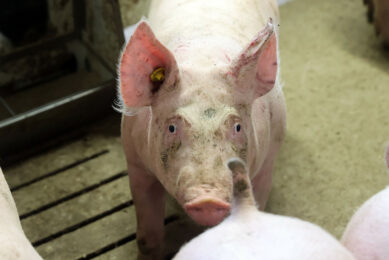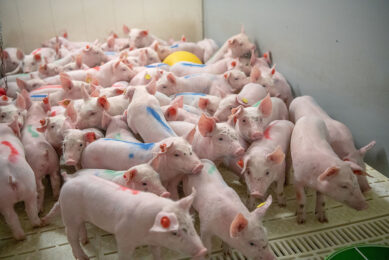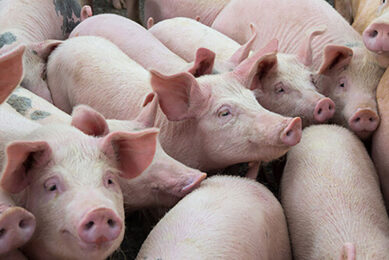A viral update – lots going on in the swine world
There is a lot going on in the swine world regarding viral infections over recent days and weeks – flu, PRRS and circovirus, so I thought it would be useful to give an overview for readers.
One ‘flu’ over the cuckoo’s nest:
It amazes me that a human flu virus (H1N1), albeit one which has co-mingled with porcine and avian genetics has emerged as ‘swine flu’ rather than ‘Mexican’ or ‘North American’ (OIE) flu and is causing disruptions in pig trade and concern about pork consumption around the world. The media cuckoos have a lot to answer for all this hype. I must admit the early stories were of concern, with a high reported mortality and I expressed my concern at a Rotary meeting that this was potentially more serious than avian flu, as it had already been transmitted from human to human unlike the avian influenza strain (H5N1).
Fortunately, although the virus is highly contagious, it is not highly pathogenic (disease causing) at this stage and has probably been going on for some time in Mexico, as it appears well disseminated there. To reassort, to produce this new strain, a human and porcine flu virus have to come in contact in a cell, whether in humans and in pigs. In this case probably man. The N and H subtypes found in man and pigs are usually similar (see Table 1 –©bold Xs) and are often very different from many of the avian subtypes. Therefore it is man to pig contact, which is important and the chances may actually be higher in backyard scenarios – as in Asia and Asian flu epidemics – rather than intensive husbandry situations where there is high pig but low man contact.
Table 1. Type A influenza surface subtype antigens (from Defra, 2005).
| Haemagglutinin(H) | ©1 | ©2 | ©3 | ©4 | ©5 | ©6 | ©7 | ©8 | ©9 | 10 | 11 | 12 | 13 | 14 | 15 |
| Human | X | X | X | © | © | © | © | © | © | © | © | © | © | © | © |
| Swine | X | © | X | © | © | © | © | © | © | © | © | © | © | © | © |
| Avian | X | X | X | X | X | X | X | X | X | X | X | X | X | X | X |
| Neuramidase (N)© | © | © | © | © | © | © | © | © | © | © | © | © | © | © | © |
| Human | X | X | © | © | © | © | © | © | © | © | © | © | © | © | © |
| Swine | X | X | © | © | © | © | © | © | © | © | © | © | © | © | © |
| Avian | X | X | X | X | X | X | X | X | X | © | © | © | © | © | © |
It is interesting that the UK flu experts forecasted that the next flu epidemic would likely come from H1-3 and N1-2 virus reassortments rather than the avian subtypes – how right they were.
Highly pathogenic PRRS – an Asian problem?
The spread of the flu virus around the world by passengers on planes highlights the easy movement of infections. The movement of breeding stock and semen is the nearest we get to intercontinental transmission and we are fortunate that the highly pathogenic strains of PRRS, which have caused ‘high fever disease’, are confined to China and parts of the Asian region rather than spreading to Europe and N. America. We are lucky that the pig flow is to Asia rather than the other way, but it also highlights the importance of surveillance and vigilance and import controls.
Circovirus – vaccine confusion:
We have just had reported major meetings in Athens, Lisbon and Singapore on the sow vaccine (Merial – Circovac®) and the introduction in Europe of a new piglet vaccine (Porcilis® PCV – Intervet/SP) and the continued roll-out in Asia of Boehringer Ingelheim’s – Ingelvac CircoFlex®, respectively. The vaccines have been an undoubted success, with reports of 90% of the US market using vaccines in piglets, which resulted in shortages in other parts of the world. This situation is steadily improving now that new production is coming on stream.
There is still a dichotomy of opinion on the best use of vaccines either in sows or piglets but both seem to have benefits. Sow vaccines obviously protect the breeding stock and their subsequent litters from the virus. The maternally derived antibodies (MDAs) also protect piglets in the nursery stage for a period of time, which has not quite been determined. Their presence appears to neutralise a viraemic attack and will permit immunity to develop without disease, if the viraemia takes place at an early stage.
In systems where the viraemia is taking place later, especially in the finishing barns, the protection appears to be no longer sufficient. Piglet vaccines appear to give good protection both during the nursery and finisher stages (from two weeks after vaccination). These observations were confirmed in a recent survey of UK vets that the sow and piglet vaccines gave similar protection in the nursery (weaner/grower stages) but the sow showed advantages in the number of pigs born alive and the piglet vaccines gave markedly superior protection in the finishing stages (see Table 2).
Table 2. Survey of UK vets and the comparative improvement©in results from sow and piglet vaccination.
| Vaccine | ©Pre-weaning (pigs/litter improvement) | Nursery (weaner/grower)mortality reduction (%) | Finisher mortality reduction(%) |
| Sow | 0.1 | 1.7 | 0.2 |
| Piglet | 0.0 | 2.0 | 3.6 |
From the American Association of Swine Veterinarians recent meeting there were many programmes of use described, such as using sow vaccines in piglets and piglet vaccines in sows. Vaccinating piglets at processing (below one week of age), one-shot or two-shot programmes and the effects of MDAs on vaccines were also reported and by the end there appeared to be almost a confusion of information.
I think the basic rules apply, if you use vaccines in sows to boost immunity don’t be surprised if MDAs interfere with early piglet vaccination, therefore delay it for as long as possible, to at least weaning. There is a definite split between one-shot or two-shot use between the US and Europe. This may be a reflection of the size of farms, as in the US, compliance is a reported issue. In the EU we tend to have smaller farms and cost of vaccine and administration pushes us more towards the one-shot approach, if we can.
Viral infections do play an important role in pig production, and can have a devastating effect. We have wrestled with PCV2 over the last decade and are almost getting on top of it now but we are still struggling with PRRS virus. We have enough of our own problems, so it seems even more unfair that the media appear to be blaming us over ‘Mexican flu’.











